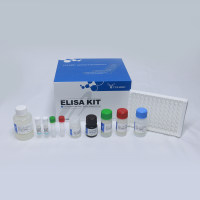Evaluation of Chemosensitivity of Micrometastases with Green Fluorescent Protein Gene-Tagged Tumor Models in Mice
互联网
431
The chemosensitivity of micrometastasis is an important factor in therapeutic approaches to micrometastasis. The protocol in this chapter presents procedures capable of examining the drug sensitivity of micrometastases to anticancer agents, especially those in the peritoneal cavity, lymph nodes, and the lung in mice. The protocol consists of green fluorescent protein (GFP) gene-tagged metastasis models in mice and unique detection devices for GFP. The latter include a small, convenient stereo fluorescent microscope for internal visualization of micrometastases at the cellular level with magnification and a handy GFP detection device for external, noninvasive monitoring of therapeutic effect of a drug without magnification. Mice are injected with GFP-tagged tumor cells and divided into an early and a late administration group according to the timing of drug administration. Early administration starts from 1–2 d postinjection for peritoneal and lung metastases and 2–3 wk after subcutaneous injection for lymph node metastasis, when the micrometastasis macroscopically remains invisible-less than 0.5 mm in maximum diame-ter-as confirmed by the detection device. The results thus obtained indicate that micrometastases are more sensitive to anticancer agents than advanced metastases. This system using GFP-tagged tumor models is an indispensable tool for micrometastasis research.









